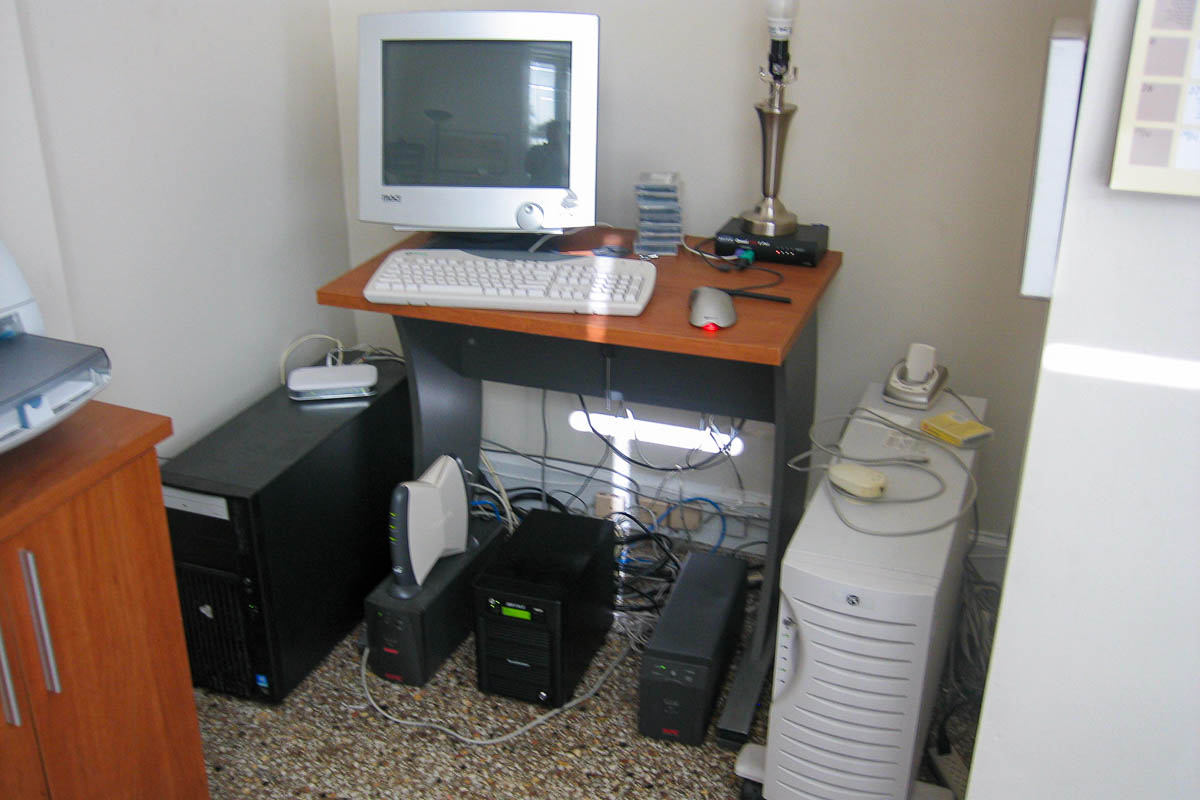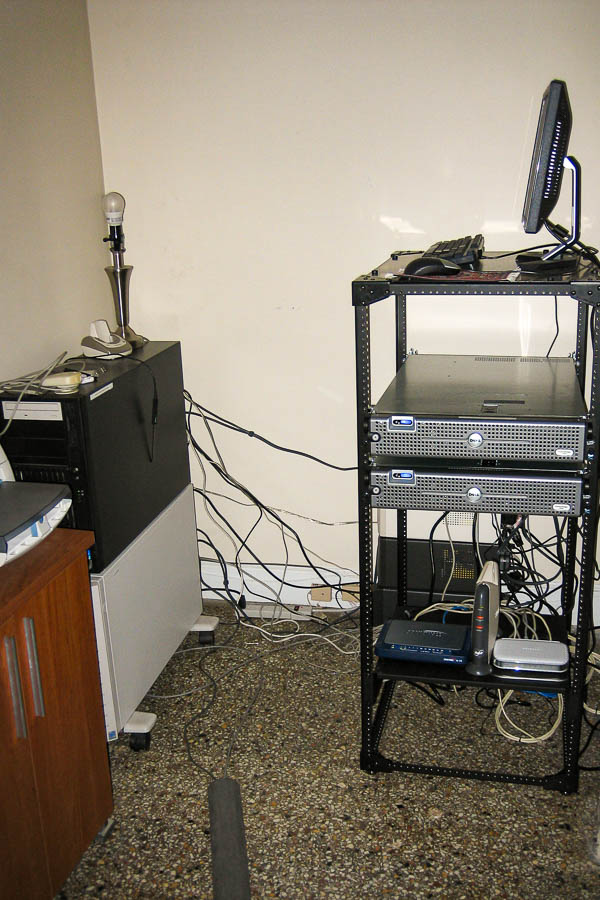On Friday, I used Arithmetic™ to predict that the 162-million-row weather data transfer from Weather Now v3 to v5 would end around 7pm last night. Let's check the logs:
2022-04-04 18:48:30.7196|INFO|Clearing v3 archival records for ZYTX
2022-04-04 18:49:27.7471|INFO|Moved 157,408,921 weather archives from v3 to v5
2022-04-04 18:49:27.7471|INFO|Finished importing; duration 4.04:14:55.0952715
Nice prediction. (It logged 157 million rows because I made a performance tweak and re-started the app after 5 million.)
As I've mentioned, those 162 million rows only go back to September 2009. But v3 launched in January 2007. And it turns out I have a second archive, also containing about 25 GB of data, going back to August 2006. I had to think back to decisions I never documented to piece together why.
In August 2006, I had a single big machine that served as my domain controller, Web server, and Exchange endpoint, and a second big database server. In this photo from 31 July 2006, the Exchange/Web/DC server is the white one on the right ("DOPPELKUH") and the SQL server ("BULLE") is the big black one on the left:

Now, BULLE was a huge machine for the time, with about 200 GB of disk space and (I think) 16 GB of memory. That 200 GB expanse tempted me to turn off a data-purge feature from more parsimonious days, and apparently I deployed that change around 9am on 11 August 2006. (Sadly, the purge feature worked as designed, and I have no archival data before then.)
In October 2006, I finally bought a server rack and moved the database to an even bigger set of disks:

Everything ticked along until around the time I deployed the Weather Now v3.5 refresh and discovered that the un-purged data file had grown to 25 GB. So on 3 September 2009, I simply created a new database and changed the data connection strings to point to it. That new database kept growing until I switched the archival data store to the Cloud in 2013.
And now, I get to take advantage of the triviality of that change by making an equally trivial change to the import controller's data connection string. The 2006 data file has 118,774,028 rows covering 3,988 stations from 11 August 2006 to 3 September 2009. At 435 rows per second, the final archival import should finish around...let's see...1 pm on Friday. At that point, every single byte of data Weather Now has collected in the past 15 years will be available through the App for you to see.
More from the archives: